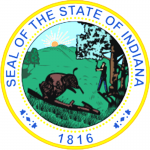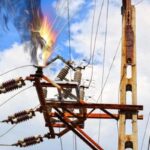- Course No E – 1282
- PDH Units 3.00
No data found for Custom Course Number
No data found for Custom Course Units
- Course No E – 1282
- PDH Units 3.00
Intended Audience: civil and environmental engineers and other design and construction professionals
PDH UNITS: 3
This course provides and introduction to industrial wastewater collection and treatment. Industrial waste should be collected in a manner that avoids unsafe conditions to personnel, equipment, and facilities. Industrial wastes should either be pretreated sufficiently to be accommodated in a domestic wastewater collection and treatment system, or provided with a separate collection and treatment system. Bench scale or pilot plant treatability studies to evaluate the effectiveness of the proposed physical, chemical, or biological unit processes may be needed for design of industrial waste treatment facilities. These studies should be conducted on the waste stream, if available, or on an equivalent waste stream at another facility. As a minimum, jar tests should be conducted prior to chemical process design to determine the reactor design criteria, process control and operating strategy, sludge production, and sludge characteristics. Using new membrane technologies, consideration must be made for brine generation that can be nonhazardous and discharged directly to a publicly owned treatment works (POTW). Pilot and bench scale studies should simulate the complete series of proposed unit process treatment steps using the same wastewater sample. This will identify any adverse effects of upstream treatment processes on subsequent treatment steps. Course Outline 1. OBJECTIVES 2. INDUSTRIAL POLLUTANTS 3. SOURCE CONTROL AND WASTE REDUCTION 4. WASTEWATER FLOWS AND CHARACTERISTICS 5. WASTEWATER COLLECTION 6. WASTEWATER TREATMENT 7. GUIDELINES FROM ACTUAL EXPERIENCE This is an introduction to the technology, systems and design practices for industrial wastewater collection and treatment.
Learning Objectives
At the successful conclusion of this course, you’ll be able to identify and discuss:- Learn the characteristics of conventional and toxic pollutants;
- Learn about effluent discharge limits;
- Learn about pretreatment regulations;
- Learn about isolation and collection systems for chrome and phenol containing wastewaters, for cyanide containing wastewaters, and for mixed acid and alkaline-content wastewaters;
- Learn approaches to flow and load equalization;
- Learn the principles of equalization basin design and construction;
- Learn about limits on biological treatment processes;
- Learn the basics of bioassay procedures; and
- Learn the fundamentals of gravity and pressure collection systems for industrial wastewater.
Once completed, your order and certificate of completion will be available in your profile when you’re logged in to the site.
Ethics Courses
Environmental Engineering

E – 1934 Engineering Ethics: “Hold Safety Paramount” to Prevent Loss of Life, and the Case of Columbia Shuttle Disasterby Dr. Abolhassan Astaneh-Asl, Professor Emeritus. Ph.D., PE

E – 2086 Understanding High Energy Arcing Faults: Risks, Insights, and Mitigation Techniquesby Roman Titov, PE CCM LEED AP










